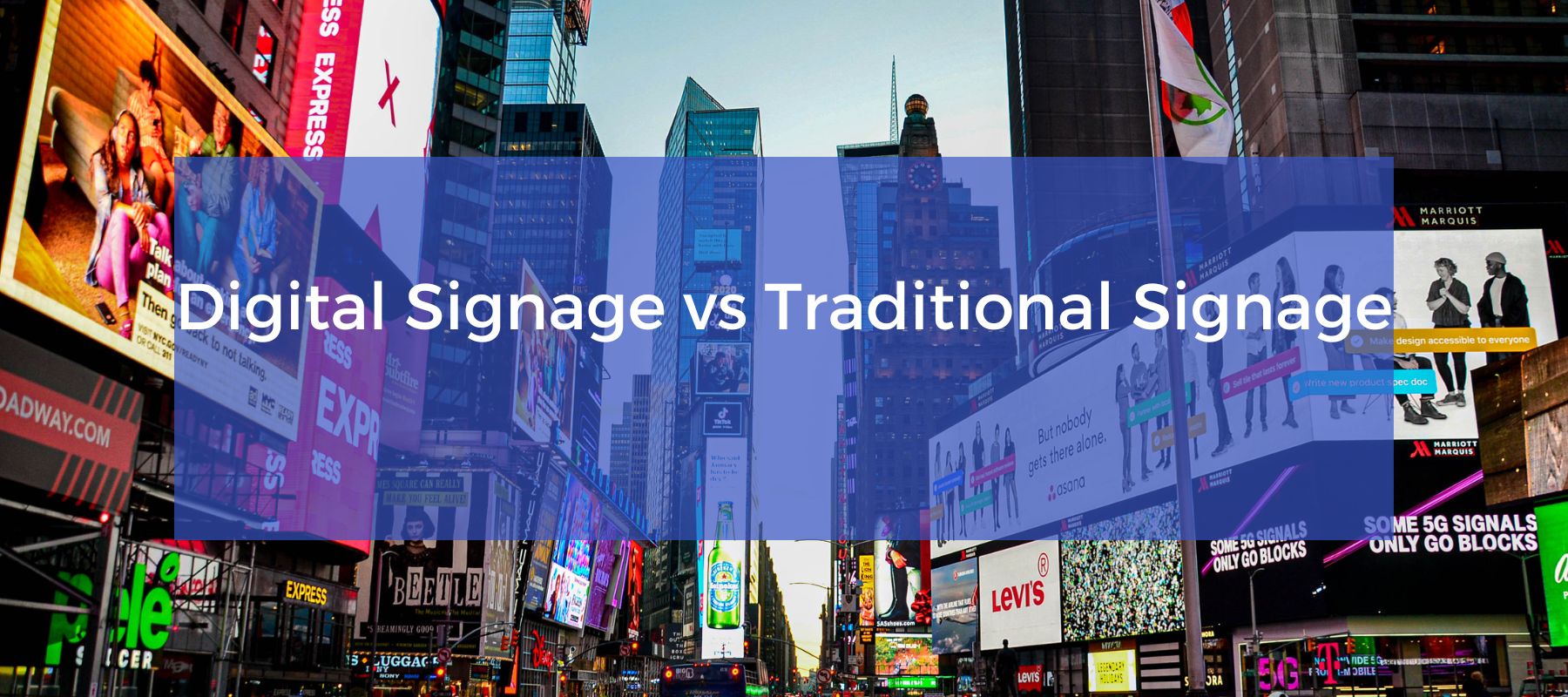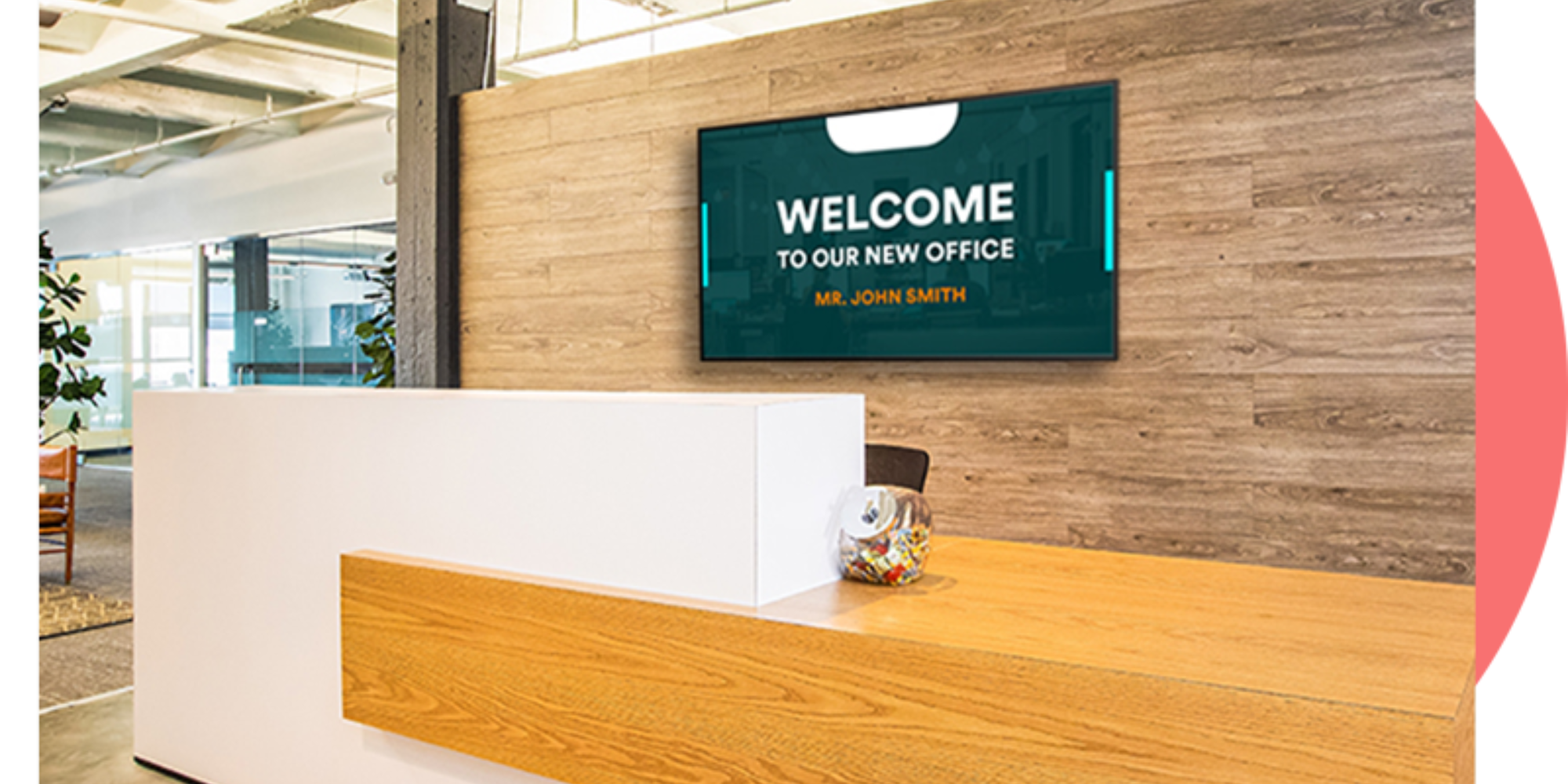
Digital Signage vs Traditional Signage
In today's world, digital signage is becoming increasingly popular as a method of advertising and displaying information. Digital signs are typically LED or LCD screens that can display videos, images, text, animations, and more in various sizes and formats.
On the other hand, traditional signage involves static displays such as printed posters, banners, billboards, and the like. Both forms of signage have their respective advantages and disadvantages, which we will discuss in this article.
We'll also explore how digital signage can be used to create a more dynamic and visually appealing way to communicate with customers, employees, or the public at large.
Differences Between Digital Signage and Traditional Signage
While both digital signage and traditional signage have their advantages in certain situations, there are key differences between the two that should be considered when choosing a signage solution.
Power
Digital signs are powered by a variety of sources such as electricity, solar energy, or battery power. This means that they need to be plugged in or connected to a power source in order to operate.
On the other hand, traditional signage typically requires little to no power. Most types of traditional signage are simply printed on materials such as paper or cardstock and don’t require any type of power source.
Reliability
Traditional signage can be unreliable due to changes in the weather, vandalism, or other external forces. Digital signage is much more reliable as it is operated indoors and protected from the elements.
Setup Location
Digital signage can be used both indoors and outdoors, whereas traditional signage typically requires a more permanent location.
With digital signage, you can easily move the display from one place to another with minimal effort or disruption in service. This makes it an ideal choice for locations where there is limited space or frequent changes in foot traffic or other factors that require relocation of the signage.
On the other hand, traditional signage has more limitations in terms of installation, as it requires additional components such as frames or supports to hold the sign in place. This makes it difficult to use in temporary or portable locations.
Upfront Cost
When it comes to upfront costs, digital signage is more expensive than traditional signage. This is mainly due to the cost of the technology required to use digital signs and the associated hardware such as screens, media players, and other networking equipment. Plus, there can be additional charges for installation or ongoing maintenance.
However, while this may seem like a large initial investment, digital signage can be a great long-term solution as it can save money in the long run due to its evergreen content and ability to be updated quickly and easily. Traditional signs often require changes or replacements which can add up over time.
Maintenance Cost
The cost of maintenance for traditional signage varies widely depending on the size, type, and location of the sign.
Generally, larger signs require more frequent maintenance due to their bigger exposure to external elements like weather, dirt, and debris. Traditional signs made from wood or metal can be expensive to maintain as they need periodic repainting or repairs due to rust or wear and tear.
On the other hand, digital signage is relatively inexpensive to maintain since it typically only requires occasional software updates and dusting. There are no additional costs associated with re-painting or repairs as electronic displays can easily be replaced when they become damaged or outdated.
Digital signage also offers many benefits such as being able to be easily modified or updated remotely, which can cut down on maintenance time and costs.
Content Format

Digital signage allows for much more interactive and engaging content formats than traditional signage. It offers access to audio, video, web applications, RSS feeds, and other multimedia elements that can be used to create an immersive experience for viewers.
This enables digital signage to help brands showcase their products and services in a unique way that is not possible with traditional signage.
In comparison, traditional signage has limited content formats and cannot be easily updated remotely. This makes it difficult for brands to keep their messaging fresh and engaging, which can lead to an outdated or stale look.
Content Updating
Digital signs provide much more flexibility when it comes to changing your content in real time. You can easily update your message on the fly as events or promotions change without having to re-print physical signs.
Traditional signage, on the other hand, requires you to physically replace your sign each time a change needs to be made, which can be a labor-intensive process.
Digital signage also allows for greater customization of content, offering the ability to customize displays for different locations or target audiences. While with traditional signage, it can be difficult to accurately convey your message due to its limited size and scope.
Content Scheduling
Traditional signage requires that the content be printed out and physically changed each time, which can be costly and time-consuming. Digital signage allows for content to be quickly and easily changed remotely with just a few clicks, giving it far more flexibility and scheduling options.
Content can be scheduled to run at certain times of the day or week, or even rotated on a continuous loop. This allows for more dynamic content that can grab attention and keep your message fresh.
Audience Targeting
Digital signage allows marketers to go beyond the reach of traditional signage. It puts the power of targeted advertising in the hands of marketers, enabling them to tailor their message, select specific audiences, and adjust messages in real time.
With digital signage, you can easily target different audiences based on demographic, time of day, or any other criteria that work best for your business. All of these are not possible with traditional signage.
Interactivity
Traditional signs can be effective, but they are often static and cannot offer the same level of interactivity as digital signage.
With digital signs, users can view content and access additional information with just a few clicks of the mouse or taps on the screen. They can interact with their environment by responding to surveys, sending messages, voting in polls, and playing games.
Digital signage also offers an array of dynamic features such as videos, animations, and scrolling text. This allows businesses to engage their audiences more effectively than ever before.
Data Analytics
Data analytics is an important factor to consider when comparing digital signage and traditional signage. Digital signs can collect real-time data on user engagement, track customer behavior, measure the success of campaigns, and generate valuable insights into consumer trends. This data can be used to better target content for customers in a specific area or demographic. In fact, by integrating digital displays with Manufacturing dashboard software, companies can monitor real-time production metrics, track safety performance, and quickly respond to operational changes—all through a centralized, visually compelling interface.
On the other hand, traditional signs rely on static images and presentations that cannot collect this type of data. As a result, advertisers must guess at the effectiveness of their campaigns without any real feedback or useful analytics.
Exposure

Digital signage has several advantages over traditional signage in terms of exposure. For example, with digital signage, businesses can easily customize and update their content to ensure that it is always relevant and up-to-date.
Additionally, digital signage offers an immersive experience for viewers, as the images and videos are presented in full color on large displays or video walls. This allows businesses to create more engaging and powerful visual messages that can easily draw attention from passersby.
Digital Signage = Better Customer Experiences
Digital signage has the advantage of providing customers with a more precise, interactive, and engaging experience than traditional signage. With all its features, it can help businesses create more meaningful connections with customers that lead to increased engagement and sales.
More From Our Blog
-

Optimizing School Announcements with Screen-Sharing Technology
In today’s fast-paced digital age, staying informed about school announcements has become more efficient thanks to screen-sharing technology. Forget about missed memos or ignored notices—this modern[…]
Read More -

How Effective is Digital Signage?
Digital signs are revolutionizing. That's the short answer. But if you're trying to convince leadership to invest in screens for your school hallways, hospital waiting areas, or manufacturing floor,[…]
Read More -

10+ Office Welcome Sign Ideas
Getting a welcome sign on your office display shouldn't take all afternoon. Rise Vision makes it pretty straightforward: pick a template, swap in your logo, and push it to your screen. Done. The[…]
Read More
Keep Your Displays Interesting – Pick New Templates Every Week!
Every week, we send template recommendations that will make you look great and improve your audience experience. And the best part, they save up to 16 hours of content creation time every week!
12,300+ Organizations Trust Rise Vision, You Can Too
Schedule a Free Demo
You deserve the #1 all-in-one platform for digital signage, screen sharing, and emergency alerts.



































